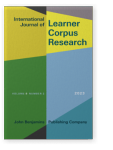Vol. 9:2 (2023) ► pp.215–247
Exploring patterns of lexical variation in the use of epistemic stance markers in written L2 English across task types and levels of proficiency
A corpus-based study
The present study examines the lexical patterning of altogether 4,022 instances of epistemic stance markers (EDs) across four levels of L2 proficiency (B1–C2) and three types of writing tasks (‘opinion’, ‘complaint’, and ‘letter’) by using the exploratory technique of Multiple Correspondence Analysis. The data stem from a Finnish learner English corpus, comprising of 1,773 texts. The results of the study showed that while the lexical patterns of EDs in the data seemed to be mostly related to task type, some proficiency-related patterns of ED use were observed across all tasks. In some cases, proficiency-related patterns could also only be observed in some of the tasks, suggesting task type and proficiency are, to some extent, interrelated when examining the use of EDs. The results thus suggest that both task- and proficiency-related constraints of EDs should be considered in both foreign language teaching and assessment.
Article outline
- 1.Introduction
- 2.Theoretical background
- 2.1Epistemic stance
- 2.2Lexical variation of epistemic stance in learner writing
- 3.Methodology
- 3.1Data
- 3.2Procedure
- 3.3Multiple correspondence analysis
- 4.Results
- 4.1An overview of the MCA results
- 4.2Lexical patterns related to both task type and proficiency level (Dimensions 1 & 2)
- 4.2.1Dimension 1
- 4.2.2Dimension 2
- 4.3Lexical patterns related to task (Dimension 3)
- 5.Conclusion
- Notes
-
References
